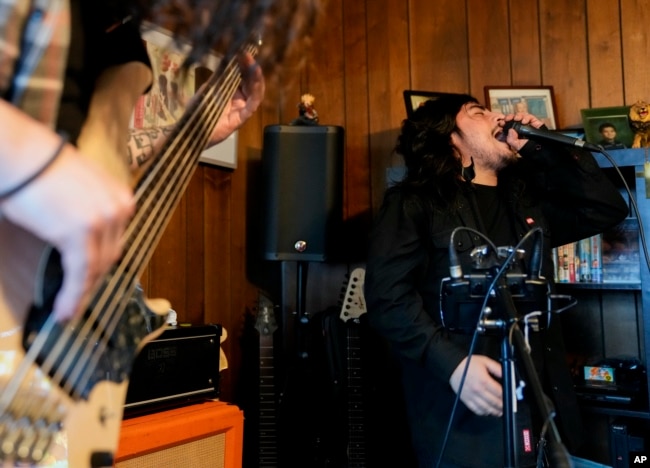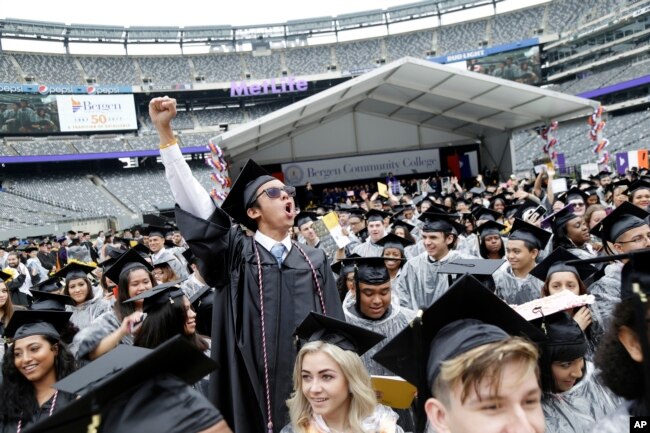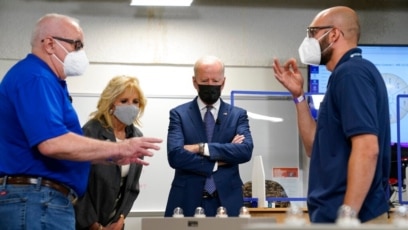Recent research suggests that there has been a big drop in enrollment in community colleges.
Two-year community colleges fill the gap between high schools and four-year colleges.
Some students take community college classes to get job training. Others go to community colleges to take lower-cost classes before moving to a four-year university. Community colleges can cost thousands of dollars less than four-year schools.
But some students say credits for classes at community colleges do not always transfer to four-year colleges, and some employers say workers from community colleges are not always ready for jobs. At the same time, there are many jobs for people without a college education, which makes people believe they do not need college.
Since 2010, the number of students at U.S. community colleges has dropped by 37 percent, or about 2.6 million students. Those numbers come from the National Student Clearinghouse Research Center, a non-profit group.
That is a surprise to many people because, during the same period, the cost of higher education in the U.S. went up sharply. Many private four-year colleges can cost over $40,000 per year. Community colleges cost, on average, less than $4,000 per year. Some are even free of cost.
Getting lost
Students say they are dropping out of community colleges because they lack support.
Enrique Camara of Washington state was a good student in high school. He wanted to take audio engineering classes. But when he got to Shoreline Community College, he said it felt like he was in “a weird maze.” He felt lost.

He said he had trouble getting help with things like choosing the correct classes and getting financial aid.
Camara said he had to “run from office to office” to find out what to do. After two school terms, Camara left Shoreline and he now works at a restaurant and plays music in two bands.
Camara is not the only student who had problems.
Megan Parish is 26. She lives in the southern state of Arkansas. She has been taking community college classes since 2016. She said she often has trouble getting information from administrators and advisers. Sometimes it took 30 days to get an answer from a person in the financial aid office.
Twenty-year-old Oryanan Lewis is in a program for medical assistants at Chattahoochee Valley Community College in Alabama. She has had problems finishing her schoolwork because of a chronic sickness.
Because she missed many classes, she was put on academic probation. That meant she was in danger of failing school.

She said she only got attention from people who worked at the college when they realized she might leave.
I feel like they should talk to their students more,” Lewis said. “Because a person can have a whole lot going on.” That means they might have problems others do not know about.
A ‘reckoning’
Supporters of community colleges say they are supposed to help the students who need the most support. But there is not enough money to help everyone.
In 2020, the Center for American Progress, a non-profit group, said community colleges get $8,800 less government money per student than four-year colleges. But experts like Joseph Fuller of Harvard Business School say the lack of money is only an excuse made by schools that are poorly run.
Davis Jenkins is a researcher at the Community College Research Center, part of Teachers College at Columbia University in New York. He calls the current situation a “reckoning.”
He said the drop in students attending community colleges would look even worse if it were not for high school students. Some high school students take part in programs that enroll them in community college classes.
Many students at community colleges start school aiming to move on to a four-year college. But research suggests the number of students able to do that is decreasing.
The two-year schools have the worst completion rates of any kind of university or college. About half the students leave school within the first year. Only about 40 percent finish their two-year school term within six years.
Many of the students who attend community colleges are minorities. Half of all Hispanic students and 40 percent of all Black students in higher education are at community colleges. If they are having trouble finishing a two-year program, that means they are not moving on to four-year colleges or finishing the job training programs.

Observers say this is a problem for the U.S. economy. For years, community colleges have trained people to work as nurses, assistants to dentists, auto repair technicians, machine operators and many other jobs. If students do not complete two-year programs to become qualified for jobs, businesses will have trouble finding skilled workers.
‘It’s not impossible’
A recent study by the Harvard Business School showed not all employers are happy with community college graduates. Only 62 percent of employers thought community college graduates were ready to work.
In addition, all colleges are having trouble keeping young people in recent years. That is because there are many jobs available right now that pay well and do not require a college education. This hurts community colleges more than four-year colleges.
In Michigan, the number of students going to community colleges dropped three times faster than those going to four-year colleges. That information comes from the state’s Center for Educational Performance and Information. It covers the period from 2018 to 2021.
Even with all the problems, some community colleges do very well. Joseph Fuller, the professor at Harvard Business School, studies management.
He said concerns about community colleges lacking enough money are “legitimate.”
“But a number of community colleges do extraordinarily well,” Fuller said. “So, it’s not impossible.”
I’m Jill Robbins. And I’m Dan Friedell.
Dan Friedell adapted this story for VOA Learning English based on a report by the Associated Press and the Hechinger Report.
Editor’s Note: Next week: Two community colleges in Alabama work to solve the problem.
Quiz – Some Students Ask ‘What is the Point’ of Community College

Start the Quiz to find out
____________________________________________________________________
Words in This Story
enrollment –n. the process by which students are accepted and attend school
gap –n. a space that exists between two things
transfer –v. to move something from one place to another
weird –adj. strange
maze –n. a system of connected passages that is meant to be hard to understand and in which people can easily get lost
chronic –adj. something without end; a condition that goes on for a long time
reckoning –n. a time when someone is judged for their past actions
legitimate –adj. fair or reasonable
extraordinarily –adv. at a very high level
